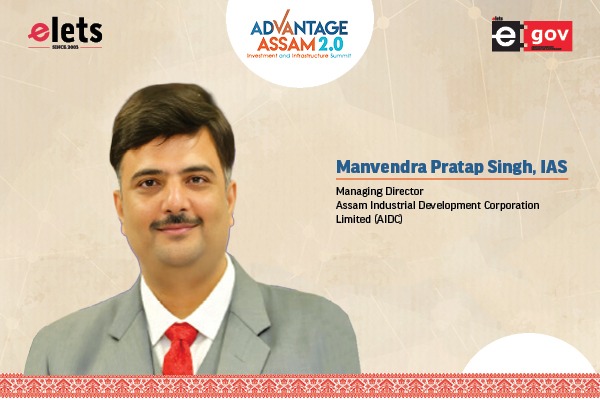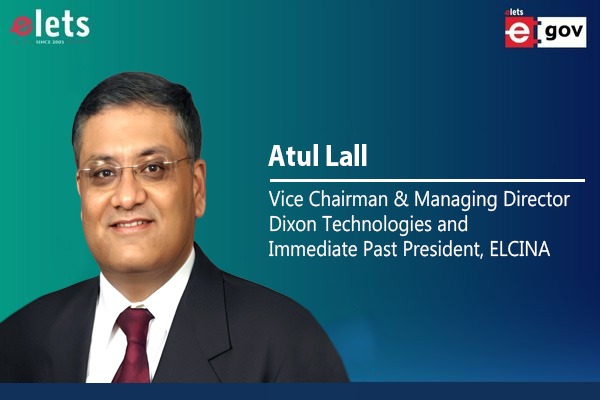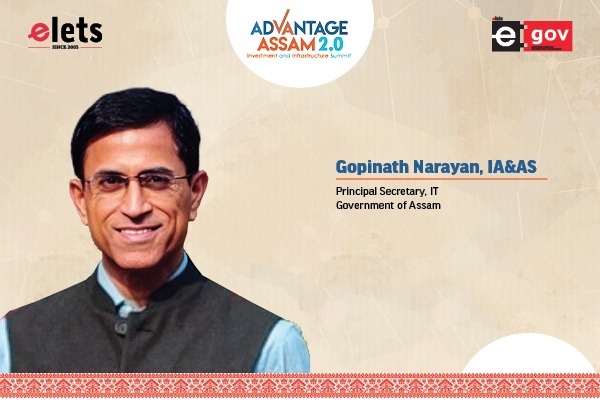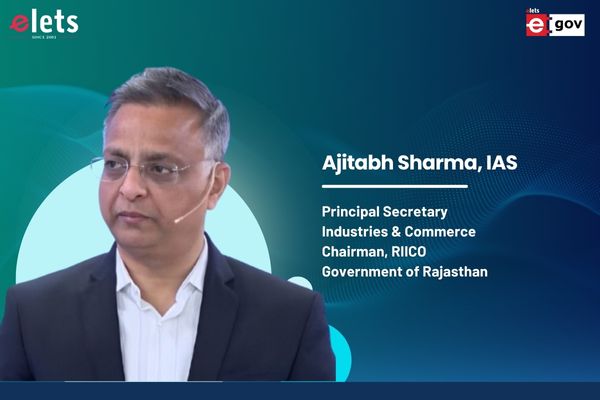
Since 2007, DGVCL has initiated and adopted IT-based solutions for various activities such as new load demands, load enhancement, billing, outage management, material management, spot billing, and complaint resolution mechanisms. Yogesh Choudhary, IAS, Managing Director, Dakshin Gujarat Vij Company Ltd., shared this insight during an exclusive interview with Hemangini S Rajput of Elets News Networks.
DGVCL has been recognized for its commitment to renewable energy, notably winning the ‘Outstanding State Discom Supporting Green Energy Uptake’ award. How does DGVCL plan to further its initiatives in renewable energy in the coming years?

The Government of Gujarat and GUVNL have been very bullish on renewable energy. GUVNL has exponentially increased tie-ups with renewable energy, while Discoms have been actively facilitating this transition, including the rooftop and open-access space. More than 800 MW of residential rooftop capacity has been installed in DGVCL’s area in the last 3 years under the Surya Gujarat Yojana alone.

Wind energy holds significant potential in the RE sector. DGVCL is planning to publish a tender to invite proposals for setting up Rooftop Wind Projects (KW scale) on a pilot basis, in line with the Gujarat RE Policy 2023, to assess the feasibility and viability of wind energy generation on rooftops, parallel to solar rooftops, promoting hybrid generation for consumer self-sustainability. Furthermore, DGVCL’s more than 600 KM coastal area can be leveraged to boost rooftop wind capacity installation and MW-scale projects.

The Government of Gujarat has recently announced the ambitious Renewable Policy 2023, providing supportive provisions to captive users for self-sustainability. Over 200 MW capacity has already been registered under RE Policy 2023 by DGVCL HT/EHT Consumers, slated for commissioning within this year. This capacity addition will enable DGVCL to shift more agricultural consumption to daytime (i.e., Solar Hours) instead of nighttime.

The Ministry of New & Renewable Energy (MNRE), Government of Gujarat, has introduced various schemes/ incentives such as PM-KUSUM (A, B, C) for agricultural consumers. DGVCL has initiated the goal of creating at least 1 solar village in each district under its distribution area.
The introduction of smart prepaid meter boxes is a significant step towards modernising the power distribution system. Could you elaborate on the expected impacts of this initiative on efficiency and consumer satisfaction?
Smart prepaid energy meters are ready to revolutionise the energy industry, impacting efficiency and consumer satisfaction significantly, as they offer real-time monitoring, control, and payment flexibility, leading to several key impacts:
In terms of efficiency, they enhance operational efficiency by reducing energy theft through better monitoring and control. These meters ensure accurate billing and revenue protection for the Discom. They streamline operations, automate meter readings, reduce manual errors, and provide remote functionalities, thereby reducing manual interventions and operational costs, as well as consumer disputes.
Secondly, real-time data empowers consumers to actively monitor and manage their energy usage, leading to more efficient consumption patterns and reduced energy wastage. It also provides payment flexibility to consumers, leading to higher consumer satisfaction.
In essence, smart prepaid energy meters drive efficiency gains by curbing losses, optimizing operations, and significantly boosting consumer satisfaction through greater control, transparency, and tailored payment options.
DGVCL has been consistently acknowledged for its operational excellence and financial management. What are the new financial management strategies or tools that DGVCL is considering adopting in the upcoming fiscal year?
DGVCL has performed exceedingly well in financial performance over the last many years. Our AT&C losses are among the lowest in the country, and the collection efficiency has been 100%. For any Discom, AT&C losses are the barometer based on which financial sustainability can be ascertained. Any financial strategy will have to be formulated considering this concept, i.e., keeping distribution losses at low levels combined with 100% collection efficiency. The installation of smart meters at our locations will further help us achieve this objective.
Also Read | Gujarat’s Path to Sustainable Development and Economic Growth
As material cost forms a substantial component of capital expenditure, measures are being taken to overhaul the material resource planning system, with optimum inventory levels prescribed to maintain inventory carrying costs at lower levels.
Currently, over 55% of consumers are paying their bills digitally. We are targeting over 90-95% of consumers to pay digitally without the need to physically visit the sub-divisions. We have already tied up with common service centers and some banks for collection near the doorstep of consumers. This will enable faster realization of revenue with minimal transaction cost. Accordingly, working capital requirements can be managed more efficiently.
In an era of rapid technological advancement, how has DGVCL integrated new technologies to enhance its operations and services? What impact has this on efficiency and customer satisfaction?
Since 2007, DGVCL has initiated and adopted IT-based solutions for various activities such as new load demands, load enhancement, billing, outage management, material management, spot billing, and complaint resolution mechanisms. All these activities have been conducted through various IT solutions like E-Urja, OMS, Geo-urja, AMR, CCC, Urja-Mitra, IAS, and many more.
Due to the use of these IT solutions, transparency in processes and data analysis has become faster. The timelines for various activities, such as new connections or outage timing, have been reduced, resulting in better and higher-quality customer service. SMS alerts to consumers for emergency shutdowns (ESD) and planned shutdowns (PSD) & billing information were started long back, improving the consumer experience. Multiple digital payment options are provided to consumers. Power-related complaints can be submitted through the DGVCL mobile application, followed up within Standard Operating Procedures (SoP).
For new HT connections, an “HT CPCCall and Apply” portal has been started. Every HT application for new, additional load, and reduction of load is attended to personally by dedicated staff from the corporate office. For LT connections, a Central Processing Centre (CPC) has been initiated for accepting applications for new connections, reduction of load, additional load, and change of name. This has significantly reduced the time taken for new connections.
GIS mapping of HT/LT networks has been done on the Geo Urja application, and surveys of all applications are conducted through the same. This is bringing a lot of operational efficiency to the system. Apart from all these initiatives, continuous business process reengineering is constantly adopted to improve operations with the help of IT systems.
Under your tenure, DGVCL has seen several innovative initiatives. Could you share some of these initiatives that you are particularly proud of and explain how they have contributed to the company’s success?
During my tenure at DGVCL, we have focused on improving operational efficiency on all fronts, mainly the timeline for providing new connections, inventory control, and bringing IT initiatives to reduce operational timelines. A central processing center for document verification of new applications and back-office teams at the division level has significantly reduced the timeline for new connections. Implementation of an inhouse developed Inventory accounting system has reduced overall inventory levels within the Discom. For urban and industrial feeders, we have initiated system improvement works to create a robust network, which has started to show results in terms of a reduction in downtime for feeders.
Gujarat Discoms have adopted the eOffice initiative of the Government of Gujarat known as ‘eSarkar,’ which has reduced physical paperwork and timelines for clearing files. We have focused on many HR issues that have resulted in overall improved work satisfaction among employees.
Finally, reflecting on DGVCL’s journey so far, what do you consider the most significant challenge the company has overcome, and what lessons have been learned that are shaping its future strategies?
Working during the Covid-19 lockdown and the second wave was perhaps the most challenging time, but we sailed through it due to the immense resilience shown by the workforce. We lost over 30 employees during the second wave. Lockdown and containment zones in various parts of the country affected the delivery schedules of materials. Migrant labourers working with contractors moved back to their hometowns, leading to a shortage of trained manpower for some time. On top of all these, industrial consumptions declined drastically, putting a lot of pressure on revenues and collections.
Also Read | Gujarat’s Energy Future
The entire DGVCL team showed immense courage and dedication towards their work, and we were able to provide uninterrupted power supply to our esteemed consumers during those tough times.
Be a part of Elets Collaborative Initiatives. Join Us for Upcoming Events and explore business opportunities. Like us on Facebook , connect with us on LinkedIn and follow us on Twitter, Instagram.
"Exciting news! Elets technomedia is now on WhatsApp Channels Subscribe today by clicking the link and stay updated with the latest insights!" Click here!













